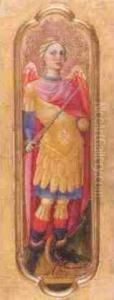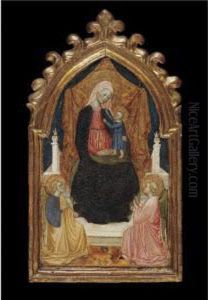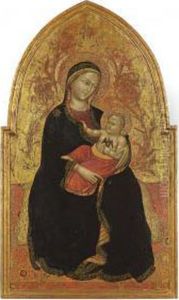Alvaro Pirez Da Evora Paintings
Álvaro Pires da Évora was a Portuguese painter active during the early Renaissance period, whose works primarily reflect the influence of the Italian Quattrocento. Not much is known about his early life, but it is believed that he was born around 1411 in Évora, Portugal. The historical records of Pirez da Évora are scarce, and as a result, much of his life and career are shrouded in mystery. However, it is generally accepted that he was one of the few known Portuguese painters to have been active in Italy during the 15th century, which suggests that he traveled outside his native Portugal to seek training and work.
Despite the limited information about his biography, Álvaro Pires da Évora is known to have been active in Tuscany and Umbria, where he was influenced by the works of notable Italian artists of the time. His style combines elements of the International Gothic with the emerging Renaissance style, characterized by a greater attention to naturalism and human anatomy. Pirez da Évora's work demonstrates a clear evolution from the medieval traditions towards the new Renaissance ideals, blending his Iberian origins with the Italianate forms he would have encountered during his sojourn in Italy.
The painter's known oeuvre is small, with only a handful of artworks attributed to him with certainty. Among these, the most significant is the altarpiece for the Church of San Francesco in Volterra, which features scenes from the life of Christ and the Virgin Mary. This work, in particular, showcases his ability to depict narrative scenes with emotional depth and a delicate handling of color and light.
Álvaro Pires da Évora is believed to have died around 1450, although the exact circumstances of his death remain unknown. His legacy is important for the history of Portuguese art, as he represents the cultural exchanges between Portugal and Italy during the early stages of the Renaissance and the diffusion of Renaissance styles across Europe. Despite the brevity of his career and the few surviving works, Pirez da Évora remains a figure of interest for art historians studying the international connections and stylistic developments of the 15th-century European art scene.


